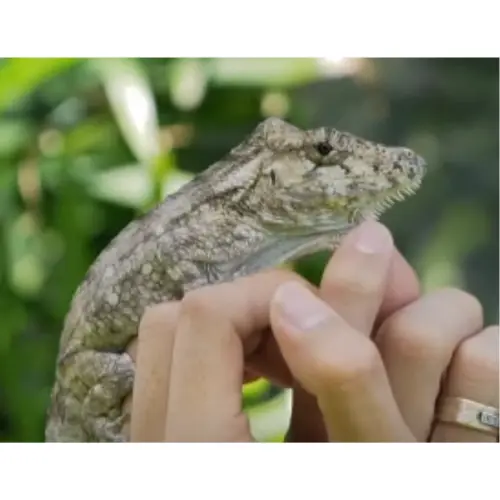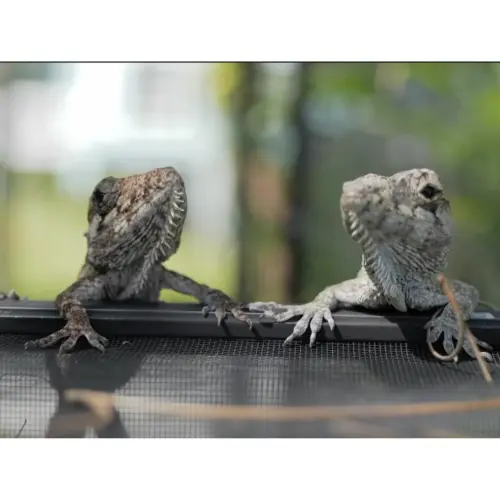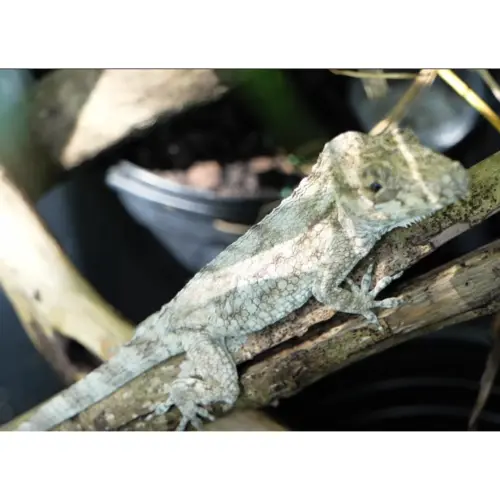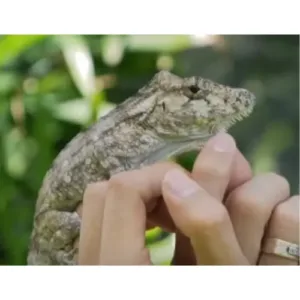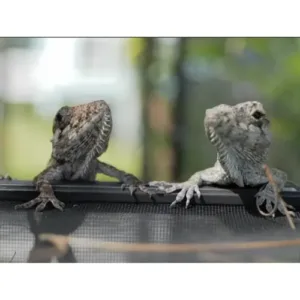Cuban false chameleons can make great pets for the right kind of owner. If you like quirky and unique animals, this species might be for you. You will need to research before you get into ownership. These reptiles need certain conditions in order to thrive in captivity.
If you are looking for a great chameleon species to care for, look no further than the Cuban false chameleon. These creatures look like chameleons at first glance, but they are actually members of the anole genus.
This reptile is a prized pet in the herpetology community, as it has a distinct look. The Cuban false chameleon has unique eyes and an alien-like head. These chameleons are from the jungles of Cuba and spend most of their time in trees. They need to have lots of climbing surfaces and natural decor to stay happy.
Cuban false chameleon appearance
The Cuban false chameleon is referred to as an alien species in the reptile community. Take a look at them and you will see why! They have a lot of features that make them unique.
The head is triangular in shape and has a small bone at the rear. It gives the reptile some extraterrestrial vibes by adding substantial size to its head. The reptile has eyes that look like they are made of chameleons.
The eyes can move on their own, which is why so many people mistake it for a chameleon. The scales on the reptile are barbel-like. They are interesting, but flexible to the touch.
The body is large. The false chameleons have long and short tails. It is shorter than the rest of the reptile. The short limbs help the creatures navigate narrow branches.
The Cuban false chameleon is not as colorful as it used to be. It’s shades of brown and mossy green are what it takes on. The colors help blend the reptile into its surroundings and keep it safe. Sometimes there is a small cluster of color and patterns near the neck, but it isn’t the case all the time.
Cuban false chameleon lifespan
These animals don’t have the longest lifespan. The average lifespan of a Cuban false chameleon is three to six years. That is very short compared to other popular reptile species, such as the leopard gecko and common iguana.
Don’t let that shorten your lifespan discourage you! If you provide the right living conditions and care, you will be able to enjoy your time with the Cuban false chameleon.
Cuban false chameleon size
The average size of a Cuban false chameleon is about six to seven inches from snout to vent. They have a short tail that adds a couple of inches to their size measurement.
The difference between males and females is not very significant. There will be no significant differences in build either.
Provide your false chameleon with great care and purchase them from an experienced seller in order to give them great odds of growth.
take care of chameleon Cuban false
Cuban false chameleon care can be enjoyable and rewarding. They are a little more challenging than your average reptile. If you want them to thrive, you need to meet their specific environmental and diet needs. It is important to have a thorough understanding of these lizards before attempting to own one of them for yourself.
Cuban false chameleon feeding
Cuban false chameleons are different from other lizards in that they don’t survive alone on insects. These creatures eat wild snails in the wilderness. It is not a good idea to pick snails from the garden. There’s a good chance that those snails are rife with disease. Plus, they could contain harmful pesticides.
If you want to go to a snail supplier, you should go to a pet store. If you want your chameleon to be free of parasites, you need to buy Snails from a trustworthy supplier. A single snail is given twice a week. The false chameleon of Cuba will eat the snail.
If you want to supplement the snails, provide a couple of insects every day. There are two or three crickets that will do well. Every other time you eat, you can also dust them with calcium and vitamins.
Cuban False Chameleon Behavior
Cuban false chameleon is not as flighty as other reptile. Most of them will calm down after getting used to their environment. There won’t be a lot of activity from this chameleon. They are quite calm compared to other popular reptile species.
When there are two males in the same area, there is only one exception. Cuban false chameleons are very territorial, meaning you should never keep them in the same enclosure. Fighting will happen if there isn’t something else.
Males need to be separate from time to time. They shouldn’t even have sight of each other, even if they are in separate enclosures. They will be stressed and get riled up because of this.
Cuban false chameleons are usually not aggressive with humans. They prefer to intimidate rather than be aggressive. The lizards will stick out their tongues and open their mouths if they are warned. If this happens, give them some space and they will bite you if you press further. If you allow them to relax, they will not try to grab you.

